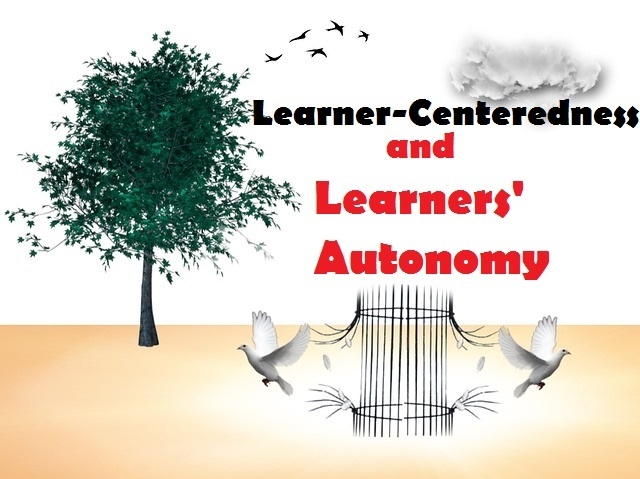Technology has changed education in several ways
Technology has impacted almost every aspect of life today, and education is no exception. No one would dare to deny that technology has made a remarkable difference in our life and education, in particular. In the last two decades, a profound technological breakthrough has changed the way we teach and learn.
Educators, teachers, and learners have also changed their perceptions of how teaching and learning occur. Just a few years ago, people who live in isolated places could barely have access to education and books. They had to travel to the centers of learning to get an education. Today, massive amounts of information are available online.
Technology has changed teachers’ roles
Technology has also started to affect teachers’ roles. Just a few years ago, teachers’ roles were mainly about helping learners to achieve instructional objectives such as the mastery of topical knowledge and skills.
Today, teachers are required to be software developers, learning designers, technical writers, and technicians… etc. This is quite difficult and definitely demands a lot of training.
As teachers, we all remember from our educational psychology course or training an expression such as: “sage on the stage”. This has been a long-standing model in education all over the world and still in some places today. Yet, because of the access to ICT and the opportunities that modern technology offered in language classrooms, teachers’ roles have changed to merely “a guide by the side”.
Learners of today are more autonomous and responsible for their learning. In many developed countries, schools, universities, and institutes have started to create learning spaces for students for optimal use of technology.
Nowadays, everyone has certainly spotted the changes that prevailed the ways in which we communicate, teach, learn, and live our lives. As an EFL teacher, I’m really interested in ICT. My interest is supported by the belief that it can result in a remarkable teaching and learning quality.
Based on a workshop that took place last April in THE FIRST INTERNATIONAL ELT CONFERENCE IN LAAYOUNE, MOROCCO, I gathered a shortlist of the most appealing ways of how technology has changed our education.
E-BOOKS ARE INCREASING BY THE DAY
It is very clear to everyone that the number of ebooks is dramatically increasing. This is thanks to the rise in the number of e-readers. Even at schools, students started to bring ebooks on their tablets and mobile phones.

No one anymore appreciates a school bag full of heavy books. It is happening this way. One question that hammers my mind, though. Will schools ever leave textbooks?
EVOLUTIONARY COMMUNICATION PATTERNS
By now, almost every student has a mobile phone. We all text each other on social media (Facebook, Twitter, Whatsapp). Everyone now started to notice the emergence of a new orthographical pattern such as Lol for (laugh out loud), n8 for (night), bb for (boyfriend), 2 for (two), 4 for (for), U for (you), C c for (see)…etc.
These patterns prevail in our communication and also in educational places is no exception. Is it possible to say there is a newborn linguistic variety that people will officially use in the future? This is definitely a task of linguists and anthropologists. But, time will certainly answer this question.
INTERACTIVE WHITEBOARD
The way we think of classroom boards is completely changing. Not long ago, I remember that our teacher used to write everything on the board using chalk and ask us to copy it on our copy books. Today’s interactive whiteboards have a lot of plugins and tools that help in demonstrating, illustrating, and graphically presenting ideas. The task of teachers has become much easier than before.
INTERACTIVE TEXTBOOKS
Textbooks have also changed. They are no more restricted to mere texts, tables, and pictures. Nowadays, textbooks have access to websites that include illustrations, additional tools, assessments, videos, extensive reading materials… etc.
TEACHER TRAINING
A couple of years ago, teachers have to join training centers to learn teaching skills and classroom pedagogy. Today, there are many online platforms that offer teacher training such as Udemy, Thinkific, Rcampus, Learnopia, AE E-teacher….etc. Courses can be either MOOCs (massive open online courses) or GOCs (global online courses). Some of them are free and some cost some money.
I recently had a teacher training on an online platform called AE E-teacher, and it was amazing. It was about a part of a course on teacher professional development: how to be a teacher trainer. I learned how to conduct needs analysis, plan my course goals and objectives, pitch my course plan, and evaluate my course.
AUDIENCE
Our sense of audience has profoundly changed. A few decades ago, the audience was the teacher and learners. Today, the audience is the world. Websites, blogs, Facebook, Twitter, Instagram, Whatsapp changed our perceptions of the audience. You can post or comment on Facebook and people from all over the world can see it.
WEB-BASED RESEARCH
I don’t think many people still use libraries. In this digital area, a large amount of our research and learning is web-based. Now, it is only one click that can help you find whatever you are looking for.
Higher education students such as MAs and Ph. Ds. have access to many online platforms that include millions of scientific articles, theses, and monographs.
ENGLISH LANGUAGE TEACHING
Technology has also changed classroom teaching. Unlike in the past, teachers have an array of possibilities and tools to help students learn school subjects very quickly. Let’s see how English language teaching has changed in this digital area.
ENGLISH GRAMMAR
Grammar is probably one of the things many learners hate because it needs a lot of practice. In the past, teachers used to explain grammar rules on the board and ask learners to make a few sentences using the grammatical structure.
Today, the presence of the teacher as a reference is no longer a big deal. Students have 24/7 access to interactive grammar exercises. Now, it is possible for learners to get many tracing tools that show them how many attempts they still have. Also, there are many grammar reference applications for extensive practice in both oral and written forms.
WRITING
Traditionally, teachers would teach a writing lesson in the class and ask learners to finish it at home. Teachers take assignments at home and spend a massive amount of time highlighting mistakes and writing feedback. With technology, so much has changed.

More writing genres such as emails, blog posts, tweets… etc. teachers started to teach. Unlike in the past, teachers no longer strive with giving feedback to students. There is what is called computer-assisted language learning and many applications such as google classroom that can help learners reach their instructor’s feedback immediately.
ENGLISH PRONUNCIATION
In the past, teachers were the only reference to teach pronunciation. It was really a hard task for teachers because they are not native speakers and some sounds are so hard to articulate. Today, there are many applications that learners can have on their phones to practice English sounds.
Teachers can bring podcasts, audios, and videos to teach the English sounds. They can have recorded sounds or segments of speech on their phones and display them to learners using voice projectors.
LISTENING
Technology has improved the quality of teaching materials. Years ago, many teachers neglected listening skills because listening materials were scarce. It was hard to find materials that match students’ level. With the upsurge of modern technology, this situation has changed profoundly.
By now, there is a substantial amount of listening materials online. EFL learners can also listen to digital recordings of fast English as often as they wish. The number of listening applications that exist helps learners to learn at their own pace and speed. They can pause, accelerate, listen while following subtitles and reading from transcripts.
I recently attended a workshop at the third annual TESOL conference in Dakhla. The presenter showed us many online listening resources. This is really encouraging and promising.
SPEAKING
I fairly remember the way we learned speaking skills when we were high school students. Our teachers used to initiate a discussion about a certain topic. Sometimes, they would give us prompts or ask questions to help guide the discussion. Now, the situation has changed.
There are more online presentation tools such as Prezi. There are many tools that help you record yourself and correct your speech immediately. Smartphones allow a range of possibilities to improve speaking skills. There are many online tools that can help learners develop their speaking skills such as 1) PromptSmart, 2) Zoom.us, 3) HiveBrain Public Speaking App, 4) SpeakerClock, 5) Six Minutes….etc.
Technology has proven to be a very powerful tool that can shape our perceptions of teaching, transform our educational practices for the better, support our students’ learning, and enable unnumbered effective teaching materials.
It has made everything easy for teachers and has created so many opportunities for people around the world to learn so many things. By now, education is available to everyone everywhere. WHAT A MIRACLE !!!
I hope you really enjoyed reading this post.
What else can you say about technology and education? Is there anything you can add up? Please, share your ideas in the comments to help others know more.
Please, Like our Facebook page and share this post if you think there is someone who needs to know about this.








I am absolutely agree with you my dear teacher , And yeah the Technology play a great role in our life as students , Lately in this year (third year in high-school) I learned a lot of lessons in You-tube , In the last year for example i was totally an ignorant in Math , But now after i found a nice channel its name is “Aderdour” , All my friends has shocked ! All my grades was between 17/20 and 19.5/20 , And the same for the other subjects such as : Physiques and Science . This is was my experience and all my friends and classmates share it with me .
At the end thanks for this awesome post .
Keep the good work up. The name of the channel made me laugh. because there is a person called aderdour most Moroccan teachers hate ..
Oh ..Lol not that one .. ours Aderdour is lovely and skinny hhh
i am totally agree with you teacher , And i would to thank you for this great post .
And yeah , The technology plays a great role in education at this century .
and what push me to believe that , is a personal experience as a student in high school .
Me and many of my friends had problems with a lot of subject in school , such as : Math and Physique. And teaching online helped us quite good .
however the teacher still have the upper hand in education .
Yes, Elwafi. Many technological tools are really promising in terms of their classroom applications. Make the best use of them. They will certianly help ya in higher studies.
I am really impressed by such an insightful article. Hats off, dear sir.
Thank you si Omar. Grateful to hear that. Keep learning
Thanks a lot for the informative ideas about the effects of technology and education. I personally like it too much. It inspired me to make more research on the issue and explore more about it. Once again many thanks and best of luck !
You are most welcome dear abdellah. Keep learning